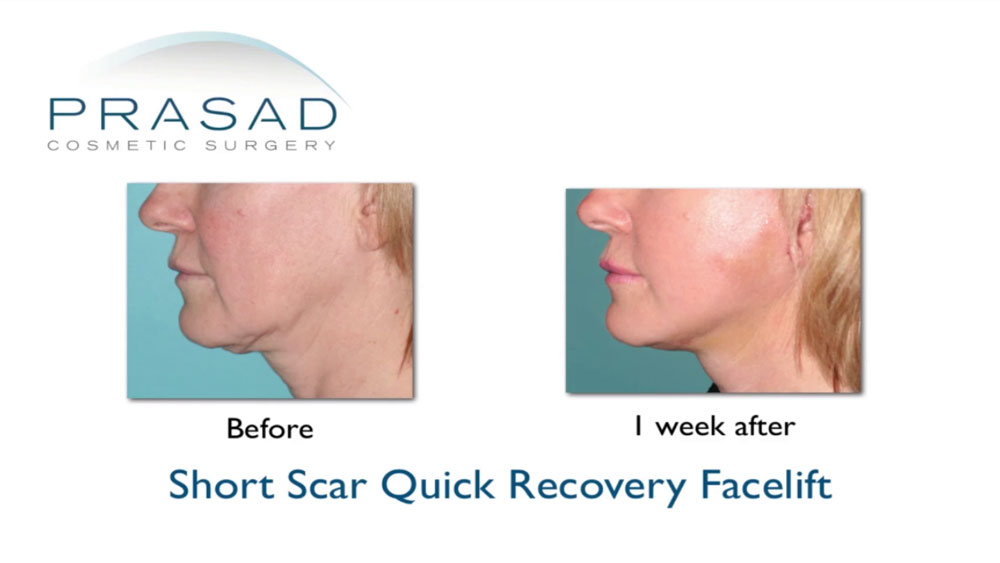The procedure right for you can be confusing and overwhelming for anyone considering a facelift. Assuming you already know you need facelift surgery, and are perplexed by the various branded procedures and claims like, “I only perform deep plane facelifts,” I’ll share with you what I believe is important to look for in a facelift surgeon.
Factors to Consider in Choosing the Best Facelift Surgeon
Personalized Approach
When looking for a facelift surgeon, the first thing I look for is a doctor who takes the time to listen to what you want, and carefully examines your face and neck. I believe that a doctor who spends time with you will be more likely to plan and customize the procedure to your specific facial aging issues.
In my opinion, facelift doctors who rush through consultations are often associated with “miracle facelifts,” or are too busy to do their best work on every patient.
Understanding Aesthetic Style


I believe it’s critical for anyone thinking about getting a facelift to understand a doctor’s aesthetic style. Some doctors and patients believe that a stereotypical “plastic” appearance is ideal. For facelifts and other cosmetic procedures, my personal aesthetic style is more natural-looking. I believe in preserving my patients’ natural facial characteristics so that any enhancement results in a younger, more refreshed version of themselves. It is critical that your personal aesthetic complements the aesthetic style of your prospective doctor. A way to do this is to look at examples of their before and after photos, as well as your impression during consultation as they describe what they would do for you.
Experience
Experience with expertise in facelift surgery is very important. In order to promote experience and expertise, surgeons frequently use names like deep plane facelift or MACS facelift to give the impression that only they perform these procedures. The truth is that all experienced and reputable facelift surgeons use a variety of facelift techniques. During the consultation, I explain that what is planned before surgery is constantly adjusted based on anatomy revealed during surgery.

Expected Recovery Time and Anesthesia Method
The expected recovery time, and type of anesthesia used are two factors that distinguish facelift surgeons. Many facelift surgeons only use general anesthesia to perform facelifts. Facelift surgery was always performed under general anesthesia during my training. At the time, I examined the procedures and began brainstorming ways to make facelift surgery a safer and more convenient procedure. After completing my training, I began performing facelifts and almost all of my cosmetic procedures under local anesthesia, with LITE IV or intravenous sedation. Patients are in a twilight state of consciousness, but they are not temporarily paralyzed, or on a respirator.


While experienced facelift surgeons can work with general anesthesia with good results, I believe that the tube inserted through the mouth into the throat can distort the face and interfere with the surgery. It is common for patients to stay overnight in a facility with nursing care following general anesthesia for monitoring. Patients are also prone to nausea and vomiting following general anesthesia. All of this adds up to a lengthy and difficult recovery.
Facelift patients in our office, on the other hand, go home in about 1-2 hours after surgery and can return to work in about a week after receiving local anesthesia with LITE sedation. In addition, patients who have facelift surgery under local anesthesia experience significantly less swelling after surgery.


Comprehensive Approach to Aging






Conclusion
It’s important to feel at ease with your facelift surgeon. You should trust the surgeon’s expertise, experience, and aesthetic style. This level of trust in my experience is the result of investing sufficient time in the consultation and education process prior to your surgery.
I hope you found this information helpful.
Best Facelift Surgeon NYC and Long Island, New York
Dr Amiya Prasad is a Board-certified cosmetic surgeon, and Fellowship-trained oculofacial plastic surgeon. He’s been in practice in Manhattan and Long Island for over 25 years. He’s been performing facelifts and neck lifts throughout his career, and even during his Fellowship experience, was already thinking of how to make facelift surgery and recovery better, without sacrificing results. He performs all types of facelifts, from short scar facelift, deep plane facelift, face and neck lift, and even a non-surgical facial filler treatment called Structural Volumizing, as well as Neck Contourplasty which are for people who are not yet candidates for full facelift, or extensive neck lift surgery.
To schedule a consultation, fill up the form below, or contact any of our offices at (212) 265-8877 in Manhattan, New York City; or Garden City, Long Island at (516) 742-4636; or Vienna, Virginia at (703) 356-1336.

